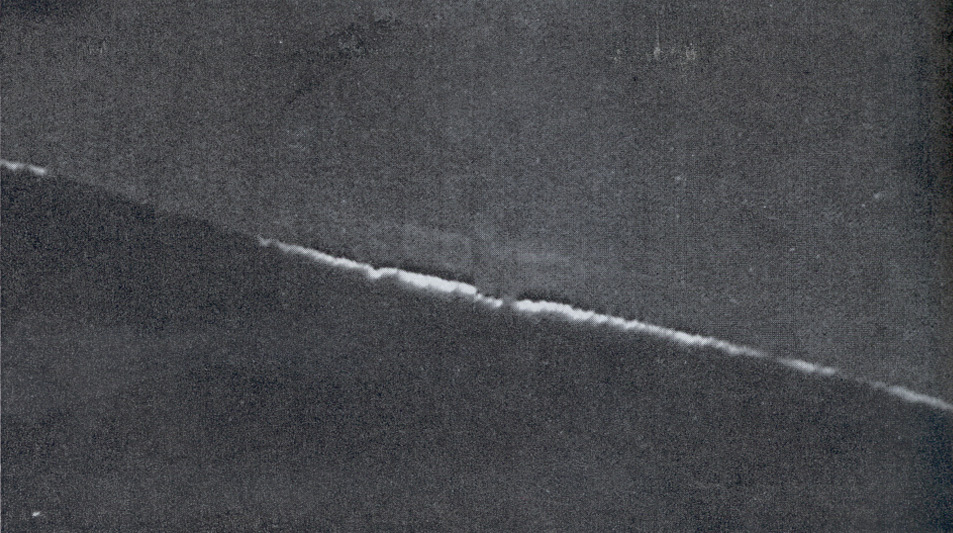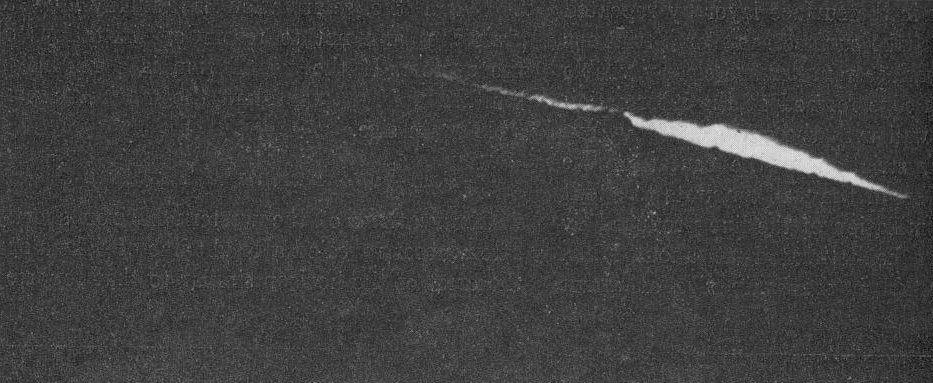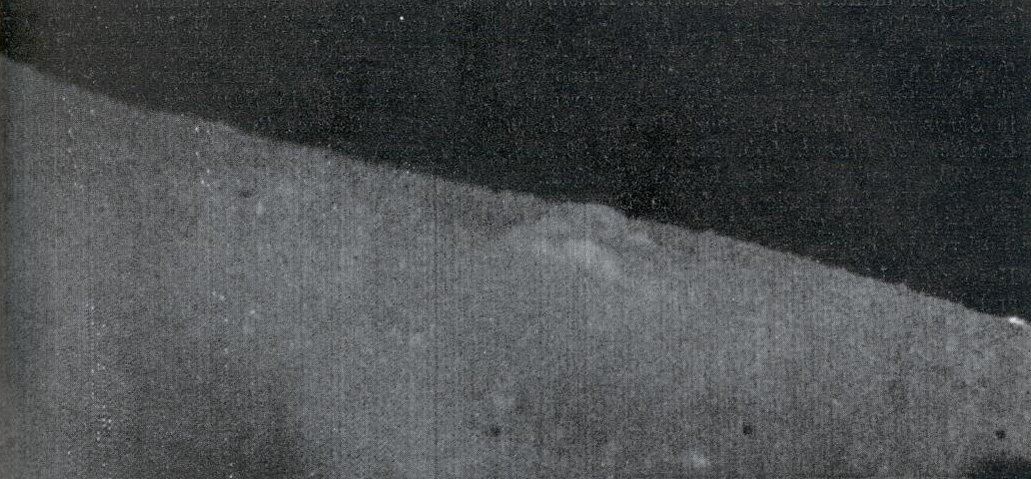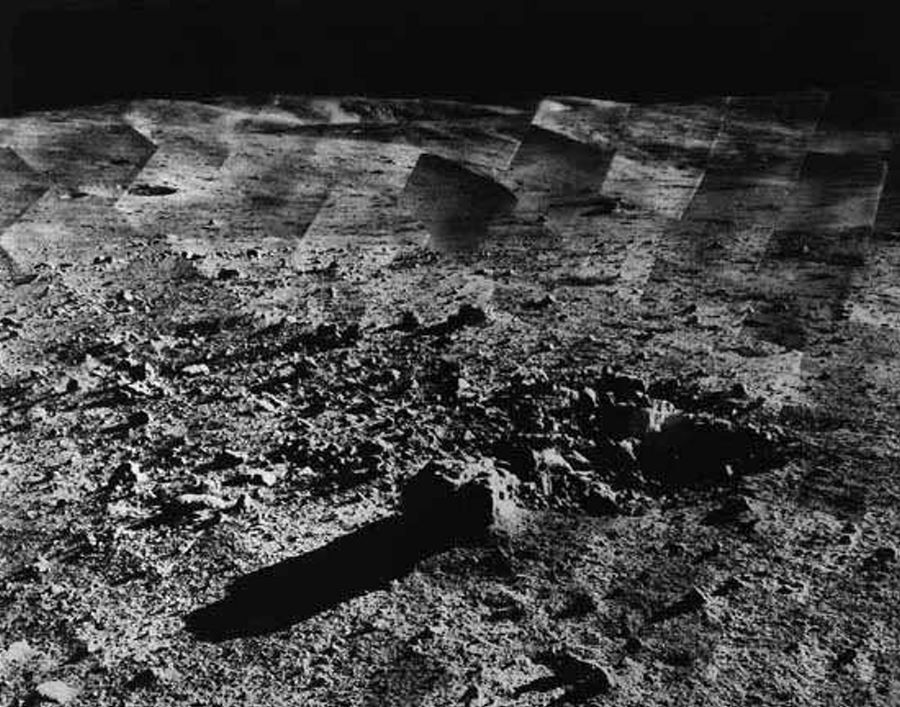|
|
|||
|
.. The Following images were taken by Surveyor 7 Provided by David Darling ..
Illumination along western horizon approximately 15 minutes after local sunset. ..
Illumination along western horizon approximately 90 minutes after local sunset. ..
|
|||
| Surveyor Observations of Lunar Horizon-Glow
J. J. Rennilson1 and D. R. Criswell2
Received: 13 August 1973
|
|||
|
..
|
|||
| Surveyor 7
Organization NASA
Surveyor 7 was the seventh and last lunar lander of the Surveyor program that explored the Moon. * Launched January 7, 1968; landed
January 10, 1968
A total of 21,091 pictures were transmitted to Earth. Surveyor 7 was the fifth and final spacecraft of the Surveyor series to achieve a lunar soft landing. The objectives for this mission were to: perform a lunar soft landing (in an area well removed from the maria to provide a type of terrain photography and lunar sample significantly different from those of other surveyor missions); obtain postlanding tv pictures; determine the relative abundances of chemical elements; manipulate the lunar material; (5) obtain touchdown dynamics data; and, obtain thermal and radar reflectivity data. This spacecraft was similar in design to the previous Surveyors, but it carried more scientific equipment including a television camera with polarizing filters, a surface sampler, bar magnets on two footpads, two horseshoe magnets on the surface scoop, and auxiliary mirrors. Of the auxiliary mirrors, three were used to observe areas below the spacecraft, one to provide stereoscopic views of the surface sampler area, and seven to show lunar material deposited on the spacecraft. The spacecraft landed on the lunar surface on January 10, 1968, on the outer rim of the crater Tycho. Operations of the spacecraft began shortly after the soft landing and were terminated on January 26, 1968, 80 hours after sunset. Operations on the second lunar day occurred from February 12 to 21, 1968. The mission objectives were fully satisfied by the spacecraft operations. The spacecraft landed near the large lunar crater Tycho, named for the famous astronomer. This crater is visible to the naked eye from Earth with luminous rays of impact ejected material emanating radially from it. Surveyor 7 was the final spacecraft in the Surveyor program. It landed perfectly, less than two miles (3 km) from the navigational target. The alpha backscattering instrument failed to deploy properly. Mission controllers successfully used the surface soil sampler claw to push the alpha backscattering instrument into the proper position to conduct its experiments. Battery damage was suffered in the first lunar night and transmission contact was subsequently sporadic. The spacecraft was last in contact on 20 February 1968. Surveyor 7 was the first probe to detect the faint glow on the lunar horizon after dark that is now thought to be light reflected from electrostatically levitated moon dust. Wikipedia - Surveyor 7 |
|||
|
''
Tycho Crater Rim, January 1968 Surveyor 7 landed in the lunar highlands, near the north rim of the crater Tycho, at 40.86 S, Longitude 348.53 E. Scientists used the scoop on the spacecraft to weigh lunar rocks, based on how much current was needed to lift each rock. Images sent back from the spacecraft indicated, for the first time, that some of the lunar rocks had been molten at some time in their history. This panorama was scanned from a photographic print of a hand-assembled mosaic, then digitally reconstructed and cleaned of visual defects by Philip Stooke. Surveyor 7 Successful lunar lander (USA)
|
|||
| FAIR USE NOTICE: This page contains copyrighted material the use of which has not been specifically authorized by the copyright owner. Pegasus Research Consortium distributes this material without profit to those who have expressed a prior interest in receiving the included information for research and educational purposes. We believe this constitutes a fair use of any such copyrighted material as provided for in 17 U.S.C § 107. If you wish to use copyrighted material from this site for purposes of your own that go beyond fair use, you must obtain permission from the copyright owner. | |||
|
|





